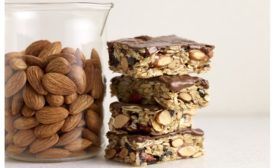Featured on Home Page
Bakery companies across the industry have built incremental growth through strategic product and line launches that meet the changing demographic demands.
Read More
Formica Bros. Bakery and the legacy of Atlantic City artisan bread
Formica Bros. Bakery, famous for its Atlantic City submarine sandwich breads, has diversified its business over the past century to find success in artisan baking, foodservice, co-packing and more.
May 13, 2016
Cold-chain management goes high-tech
New technology maintains and tracks temperatures throughout the supply chain
May 12, 2016
Packaging closure and equipment innovations address consumer food packaging concerns
As consumer demand for resealable, flexible packaging continues to grow, so do packaging closure and equipment innovations.
May 12, 2016
Dividers, depositors and rounders ready for today’s dough challenges
Creating some of today’s better-for-you products can pose dough-handling challenges for bakers and snack manufacturers.
May 12, 2016
Keep the info flowing with our eNewsletters!
Get the latest industry updates tailored your way.
JOIN TODAY!Copyright ©2024. All Rights Reserved BNP Media.
Design, CMS, Hosting & Web Development :: ePublishing











